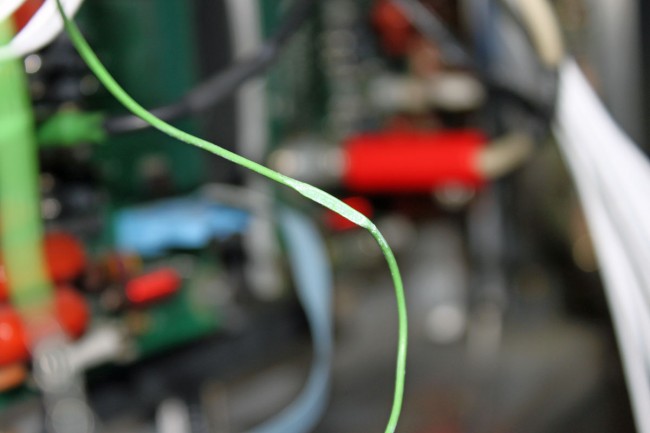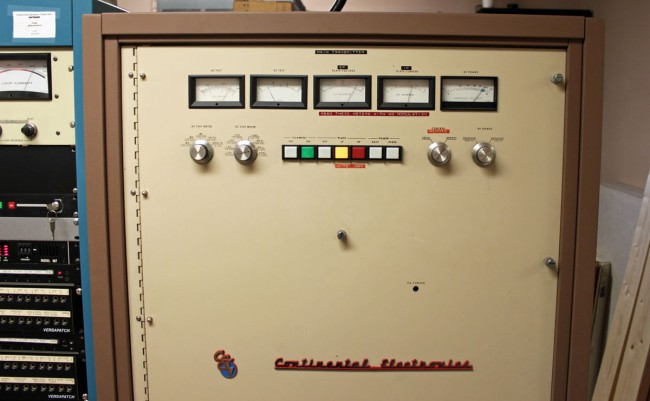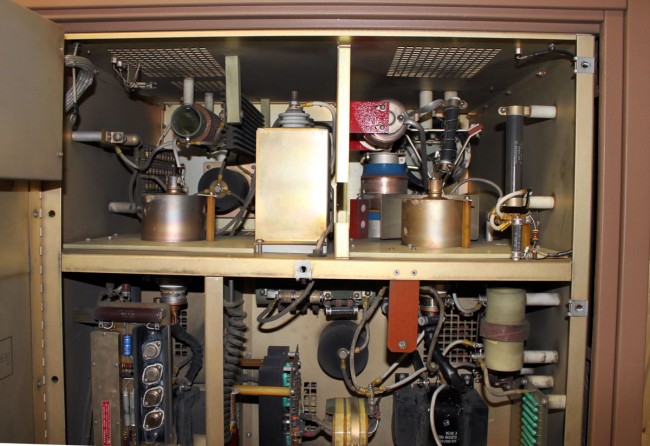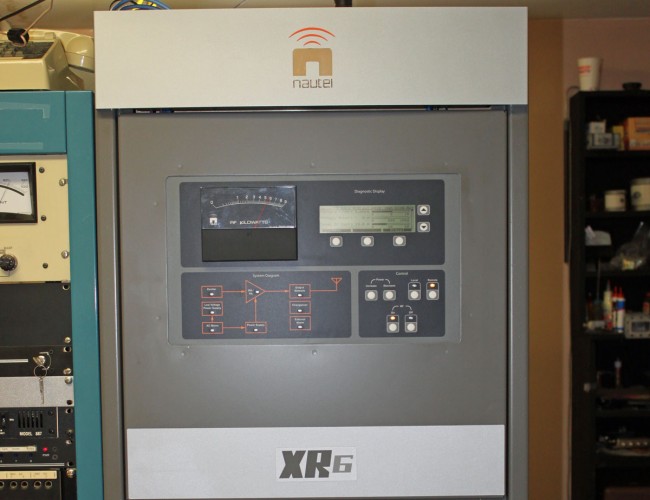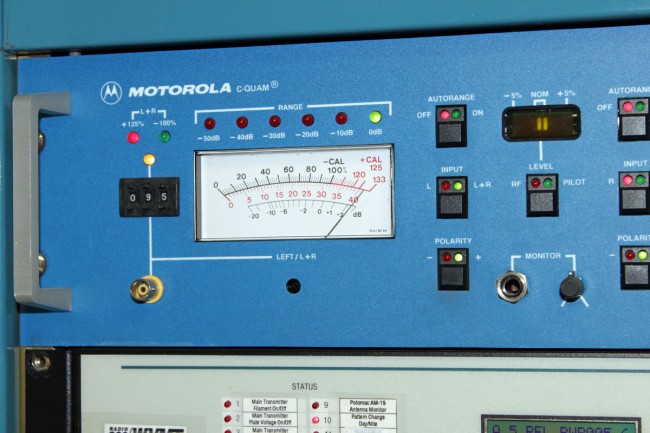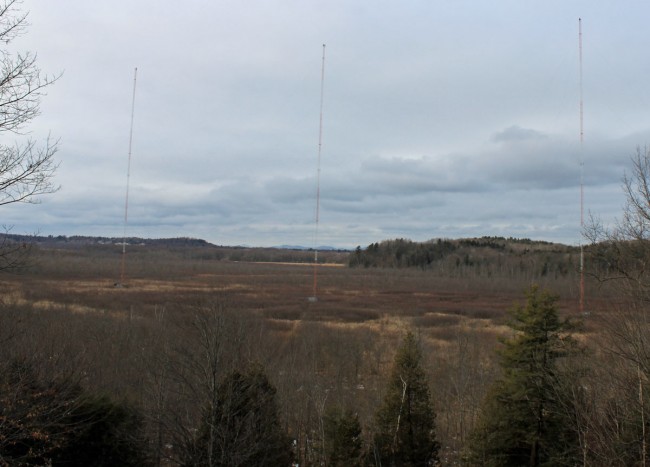I was working on a Harris SX5 the other day and snapped a picture of the scope while measuring RF drive levels. There are still quite a few of these units out in the field, judging from my search engine results. I thought it would be helpful to post something about it. The RF power amp boards for the Harris Gates solid-state AM series transmitters are the same design, I believe.
In order to fully drive the RF MOSFETs in this particular series of transmitters (Harris SX1, 2.5, and 5 including A models) at least 26.5 volts peak to peak is required. Less than that and the device will turn full-on and internally short. To measure RF drive, the transmitter must be in local with control voltage on, with the rear door interlock defeated (this can be safely done if the transmitter is wired with separate AC feeds for control and RF power supply). Make sure the RF power supply is defeated and will not turn on. Measure across the input of each of the toroids that feed the gates of the RF devices.
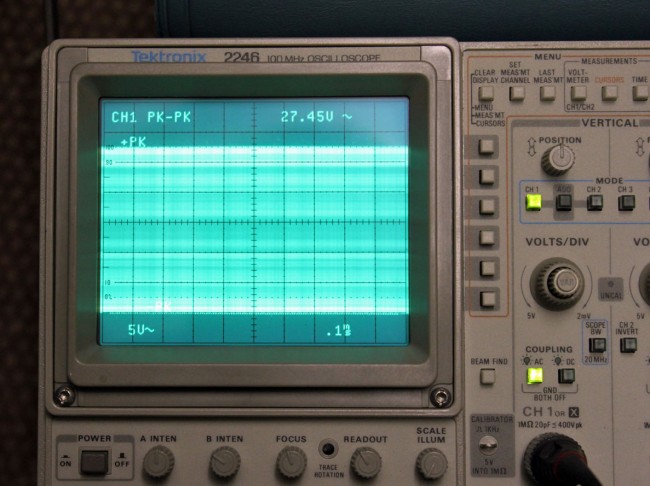
It should measure between 26.5 and 29.5 volts. This one measures 27.45 volts peak to peak. Each input toroid on every PA board should be measured as the toroids themselves have strange failure modes and may pass resistance and continuity tests, yet still not provide proper drive voltage to the attached devices. This has to do with core permeability. Each toroid feeds two RF MOSFETs, replace part is IRF-350.
As always when dealing with an SX transmitter, good luck.


